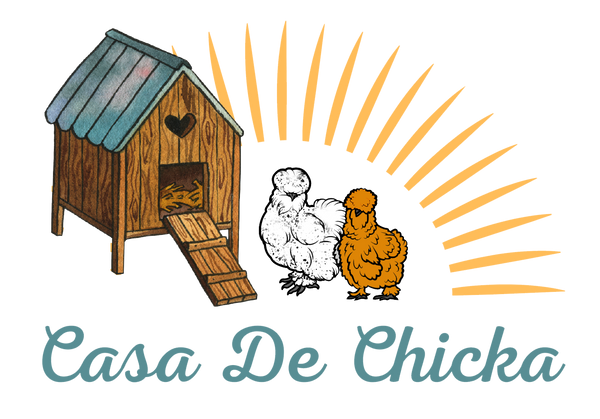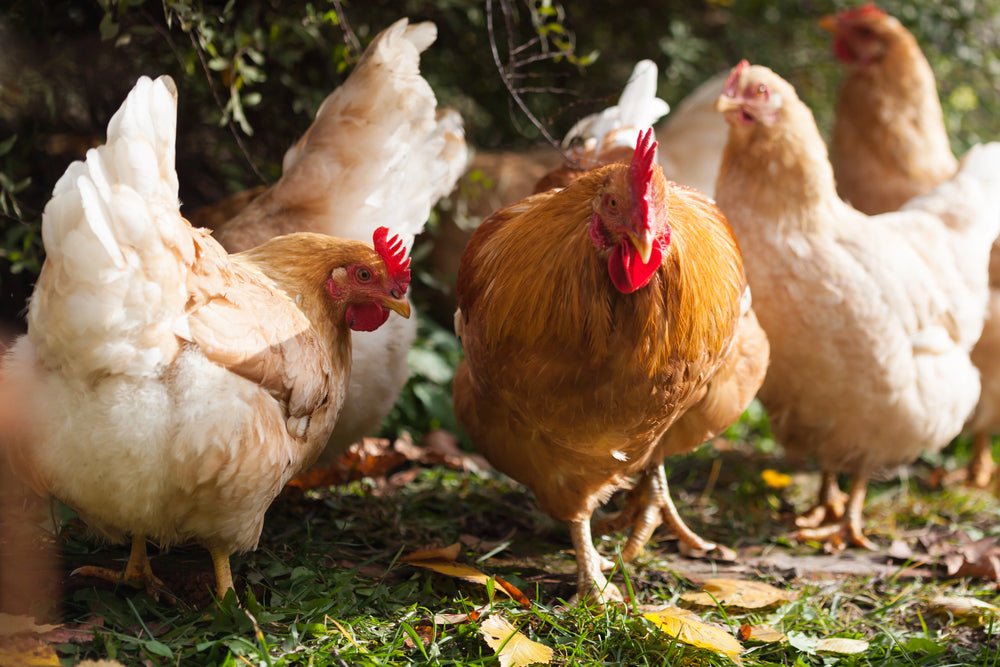As summer fades and autumn rolls in, the seasonal changes can have a significant impact on chicken behavior. From altered activity levels to changes in flock dynamics, the transition from the warm, long days of summer to the cooler, shorter days of fall brings noticeable shifts in how chickens interact, forage, and even socialize. Understanding how the changing seasons affect your flock is important for providing optimal care and ensuring your chickens are happy, healthy, and well-prepared for the colder months ahead. This blog explores the behavioral changes that occur in chickens during the autumn season and provides tips on how to support them during this transitional period.
The Science of Seasonal Changes in Chickens
Chickens, like many animals, are highly sensitive to environmental changes. The two main factors that affect their behavior as fall approaches are the shortening of daylight hours and the cooling temperatures. These environmental cues trigger physiological and behavioral responses that help chickens adapt to the new season.
The shorter days of fall mean less daylight, which directly affects chickens' circadian rhythms and hormone production. This change in daylight influences everything from their feeding behavior to their reproductive cycles. The cooling temperatures, on the other hand, prompt chickens to adjust their activity levels, body heat regulation, and foraging habits to conserve energy and stay warm.
Changes in Activity Levels
One of the first noticeable changes in chicken behavior as summer turns to fall is a shift in activity levels. Chickens tend to be most active during the warmer, longer days of summer when they have ample time to forage, dust bathe, and roam freely. However, as the days become shorter and temperatures drop, chickens begin to slow down.
With less daylight, chickens have a reduced window of time to be active. This means they wake up later, go to roost earlier, and generally spend more time resting or roosting throughout the day. Cooler temperatures can also lead to decreased activity, as chickens will often conserve their energy and seek warmth, especially in the early mornings and late afternoons when it is coldest.
Additionally, the shift in activity levels can impact your chickens' foraging behavior. While summer chickens are likely to roam far and wide in search of food, fall chickens may stay closer to the coop, focusing their foraging efforts on areas where food is more readily available. This change in behavior is a natural way for chickens to conserve energy and prepare for the leaner months ahead.
Flock Dynamics and Social Behavior in Fall
As the season changes, so too does the social dynamic within the flock. Chickens are social creatures with a complex pecking order, and this hierarchy can shift in response to environmental changes. During fall, you may notice changes in flock behavior, such as increased aggression, pecking, or even the establishment of a new pecking order.
This change in social behavior is partly due to the reduction in activity and foraging opportunities. With less time to roam and more time spent in close quarters, chickens may become more territorial or assertive about their space within the coop. The reduced daylight can also influence hormone levels, leading to increased assertiveness or squabbles over food and roosting space.
Molting, which typically occurs in the fall, can further affect flock dynamics. Chickens that are molting may become more withdrawn or defensive as they shed their feathers and grow new ones. Molting is a physically demanding process, and chickens going through it are often more sensitive to touch or stress. They may temporarily lose their dominant status in the pecking order, leading to shifting flock dynamics.
Changes in Feeding and Foraging Behavior
As the weather cools, chickens' energy needs change. Fall is a time of preparation for the colder months, and chickens naturally increase their food intake to build up body fat and stay warm. This change in behavior is often noticeable in their increased appetite and more focused foraging.
During summer, chickens may find a significant portion of their diet by foraging for insects, seeds, and vegetation. However, as fall approaches and these food sources become scarcer, chickens may spend more time foraging in concentrated areas or rely more heavily on the feed provided by their keepers. It is common for chickens to consume more feed during fall as their nutritional needs shift to accommodate molting and the cooler weather.
To support your chickens during this time, consider providing a higher-protein diet to support feather regrowth during molting and to help maintain body heat as temperatures drop. Offering nutrient-dense treats like mealworms, sunflower seeds, and cracked corn can also help ensure your chickens get the calories and nutrients they need for the season.
Roosting and Perching Adjustments
Chickens’ roosting and perching habits also change with the seasons. As the days shorten and temperatures drop, chickens will naturally seek to roost earlier in the evening. You may notice that your chickens go to bed as soon as dusk falls, even if it seems early. This is a natural response to the decrease in daylight and helps them conserve energy during the colder nights.
With the colder temperatures, chickens will also roost closer together to share body heat. If your chickens are huddling closely on the roost bars, this is normal behavior and a sign that they are staying warm. However, make sure that your coop has enough roosting space for all chickens to perch comfortably without overcrowding, as this can lead to stress or injury.
Increased Preening and Feather Maintenance
Fall is molting season for many chickens, which means they are shedding old feathers and growing new ones. This process requires a lot of energy and often results in chickens focusing more on preening and feather maintenance. Molting chickens will spend a significant amount of time grooming themselves to remove loose feathers and care for new feather growth.
Preening helps chickens keep their feathers in good condition, which is especially important in fall as they prepare for the winter months. Feathers provide insulation and protection against the elements, so chickens instinctively groom and maintain their plumage to ensure they are ready for the cold. While preening is a normal behavior, it can seem more pronounced during molting, as chickens are essentially "rebuilding" their plumage.
How to Support Your Chickens During Fall
Understanding these behavioral changes is important, but knowing how to support your chickens through the season is key to their health and well-being.
1. Provide Extra Feed and Nutrients: As chickens’ energy needs increase during fall, ensure they have access to plenty of high-quality feed and fresh water. Supplementing their diet with protein-rich treats and grains can help them maintain body condition and support molting.
2. Ensure a Comfortable Coop Environment: With cooler nights approaching, it’s important to make sure your coop is well-insulated and free from drafts. Clean, dry bedding and proper ventilation will keep your chickens comfortable as they spend more time indoors.
3. Monitor Social Dynamics and Behavior: Keep an eye on your flock's social dynamics during fall. If you notice increased aggression or bullying, consider providing extra space or distractions like hanging vegetables or pecking blocks to reduce tension.
4. Support Molting Chickens: Molting can be a stressful time for chickens, so providing extra nutrition and minimizing handling can help them through the process. Offering high-protein feed or supplements designed for molting chickens can promote feather regrowth.
5. Adjust Lighting if Necessary: With the reduction in daylight, you may want to consider adding supplemental lighting to the coop if you want to maintain egg production. However, this should be done gradually to avoid disrupting your chickens' natural rhythms.
Conclusion
The transition from summer to fall brings about a range of behavioral changes in chickens, from reduced activity levels to shifting flock dynamics. By understanding these changes and adapting your care routine, you can support your chickens through the autumn season and ensure they remain healthy, happy, and productive as they prepare for the colder months ahead.
Taking proactive steps to provide extra feed, ensure a comfortable coop environment, and support molting chickens can make all the difference in keeping your flock thriving through the changing seasons. Embrace the autumn chicken behaviors as part of their natural adaptation to the season, and enjoy the unique dynamics of your flock as they prepare for winter.
FAQs
How long does molting last in chickens?
Molting typically lasts between 8 to 16 weeks, depending on the individual chicken.
Should I add extra bedding to the coop in fall?
Yes, adding extra bedding can help insulate the coop and keep chickens warm as temperatures drop.
Is it normal for chickens to stop laying eggs in fall?
Yes, reduced egg production is common in fall due to shorter daylight hours and the energy demands of molting.
Can chickens handle cold weather?
Chickens are generally hardy and can handle cold weather, but they still need a dry, draft-free coop and proper nutrition to stay healthy.
How can I help my chickens stay active in fall?
Providing enrichment activities, such as hanging treats, pecking toys, or scattering feed in the run, can help keep chickens active and engaged.

